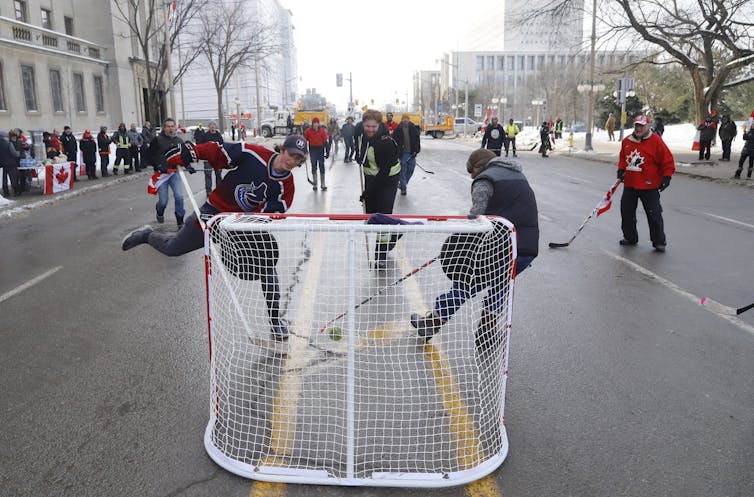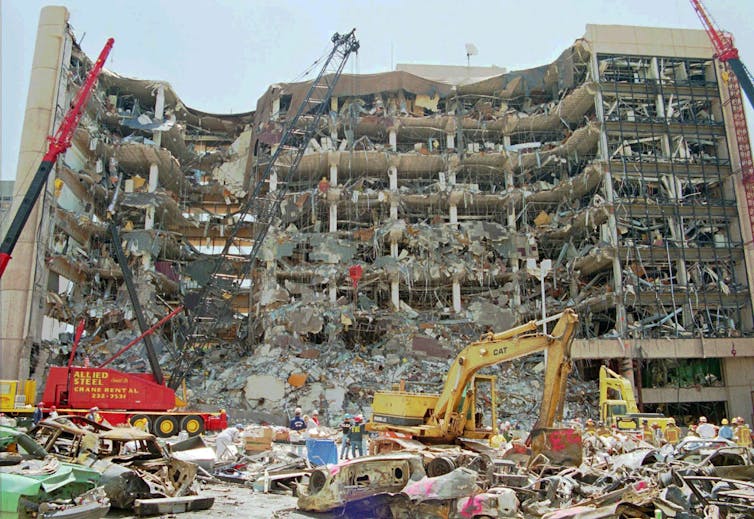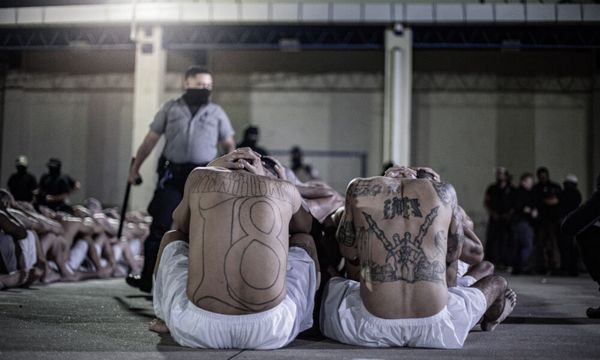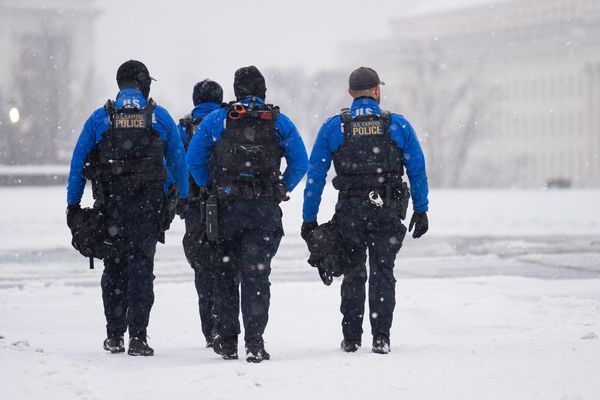
“Protecting the perimeter” is usually a term reserved for military engineers wanting to protect critical infrastructure within a conflict zone.
At first glance, it doesn’t seem to be a term that’s applicable to a protest in Ottawa. Or is it?
The hundreds of truck drivers and their supporters who have descended upon Parliament Hill to protest vaccine mandates appear to be settling in for the long haul, with some saying they could be in the Canadian capital for months.
While the protest hasn’t descended into large-scale violence, there have been several arrests, war memorials and national monuments have been desecrated and the Confederate flag and Nazi symbols have made appearances.
Some suggest protesters with extremist right-wing views aren’t representative of the demonstrators as a whole, but right-wing extremism has been a growing movement even before the Jan. 6, 2021, attacks on the U.S. Capitol building.
Read more: Right-wing extremism: The new wave of global terrorism
Have Canadian security officials taken note of that rise? What have they learned from Jan. 6 and the failure that day to protect the perimeter surrounding a national symbol of democracy?
Lessons from Jan. 6?
In fairness to American officials, they had less than one hour to tactically prepare after former president Donald Trump incited his followers to march to Capitol Hill (although there is evidence that the Federal Bureau of Investigation and the Department of Homeland Security had intelligence of the potential for trouble).

In stark contrast, officials in Canada were made aware a full week in advance, when the “freedom convoy” left British Columbia on Jan. 22 announcing Ottawa was their final destination. Their motivations were clear, their manifesto outlined their grievances and they managed to organize a sizeable GoFundMe war chest of almost $10 million, though the campaign is now on pause and only $1 million of it has been released.
Read more: Is GoFundMe violating its own terms of service on the 'freedom convoy?'
It should have been obvious this group had resolve and was determined.
Yet how is this group now an occupying force in the nation’s capital and a source of general aggravation for many of its citizens?
The answer is simple. Officials have apparently made a decision to prioritize the rights of protesters under Canada’s Charter of Rights and Freedoms, even though there’s no declared end date to their protest and there’s myriad potential security risks and mounting economic losses in Ottawa.
Angry people driving vehicles
Regardless of your position on the merits of the protest, public officials in Ottawa could have easily and justifiably closed a large portion of Wellington Street in front of Parliament Hill to vehicular traffic for security reasons.

The political costs would have been low since they’ve done it for Canada Day celebrations, an invitational event. They could have communicated via various media outlets many days in advance that pedestrians were welcome to demonstrate on Parliament Hill to their hearts’ content, but no vehicles would be allowed.
This seems like it would have been a smart move, given that recent history is replete with examples of angry people behind the wheels of trucks and vans who have caused much intended harm.
In 2016, a man drove a large transport truck into a dense crowd in Nice, France, killing 87 people.
In 2017, another terrorist drove a truck into a dense tourist area in Stockholm, Sweden, killing five people.
Of relevance to Canada due to its proximity to a parliamentary building, a man drove a car into pedestrians in front of the British parliament in March 2017, killing four people.
Critics will be quick to mention that all three of these attacks were motivated by Islamic extremism, which is true. But shouldn’t security officials consider the fact that these protesters might not only be dangerous given the incendiary nature of some of their protest tactics, but could also represent an attractive target for violence themselves since some appear to represent far-right views and white supremacy?
And let’s not also forget Timothy McVeigh, a man with strong right-wing, anti-government views who planted explosives in a truck beside a federal government building in Oklahoma in 1995, killing 168 people. He was a home-grown terrorist, angry at the federal government.

High tolerance for risk?
It would appear that officials in Ottawa have either an extremely high tolerance for risk or have been extremely confident no significant security incidents would warrant closing Wellington Street to vehicular traffic.
If the protesters had been denied front-row parking spots in front of the Parliament buildings, it might have weakened their resolve to stay. The protest might have dissipated after the first weekend.
Instead, each day it continues, it costs taxpayers more than $1 million a day in policing and provision of other municipal services. While Ottawa police are scrambling to try to deal with the protesters, suggesting there’s nothing they can do, the RCMP is busy trying to remove another convoy blockade at the border crossing in Coutts, Alta.
The other side to this story is perhaps Canada is the model of democracy, where the protest rights of a small minority trump the security needs of the state and the economic considerations of the majority.
Ironically, Toronto officials are now bracing for further protests in the days ahead by protecting the perimeter of the Ontario legislature. So perhaps we do learn security lessons in Canada — oftentimes the hard way.
Sean Spence does not work for, consult, own shares in or receive funding from any company or organisation that would benefit from this article, and has disclosed no relevant affiliations beyond their academic appointment.
This article was originally published on The Conversation. Read the original article.







